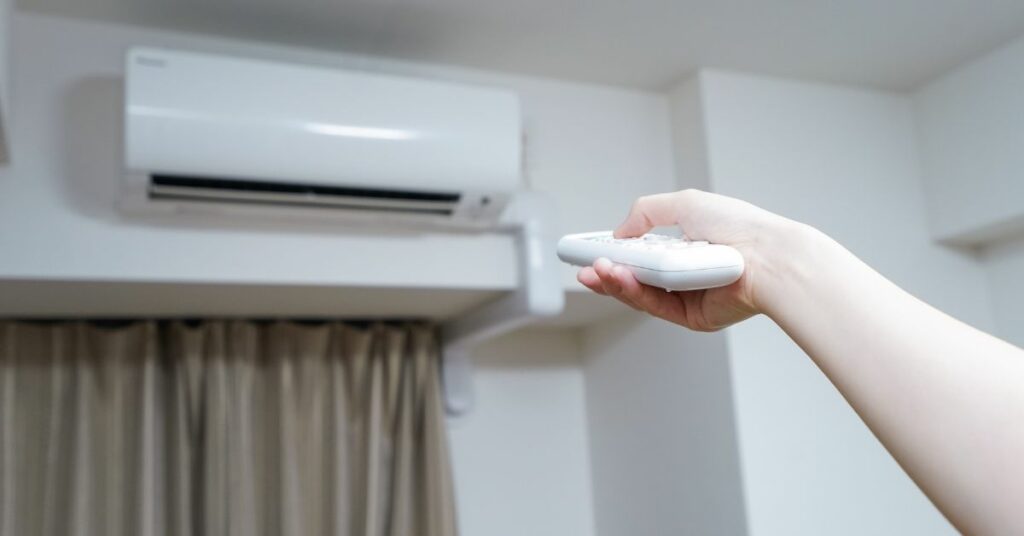Picture yourself wandering through the bustling streets of Tokyo on a sweltering summer day. As the sun beats down on you mercilessly, you might begin to wonder: are air conditioners commonplace in Japan? After all, this is a country renowned for its advanced technology and modern way of life. Do the people of Japan have access to the same innovative cooling systems that we do in North America and Europe? In this blog post, we’ll explore the prevalence of air conditioning in Japan and the factors that have shaped its use in this unique country.
1. Air conditioners are ubiquitous in Japan
Air conditioners are a common sight in both homes and public establishments in Japan. Due to the country’s contrasting seasons, with cold and dry winters and hot and humid summers, air conditioning is considered an essential device for comfort. The Japanese term for air conditioner, エアコン, is derived from the English language, as there was no original Japanese word to name this technology. The devices are usually made by Japanese manufacturers such as Daikin, Hitachi, Panasonic, Toshiba, Mitsubishi, and Fujitsu, and their remote controls are designed to be simple and intuitive to use. Knowing how to use and maintain an air conditioner properly is necessary for enjoying one’s stay in Japan.
2. Origin of the word
The word “air conditioner” in Japanese is エアコン, which is a combination of English words. This is because there was no original Japanese word for this technology. Air conditioners are essential devices in Japan due to the country’s climate, which has very contrasting seasons. Most Japanese electric appliances are not translated into other languages, so it is important to know the key words to understand how they work. The AC’s main unit is usually affixed above a window and is controlled by a remote control called リモコン, which is a contraction of the words “remote” and “control.” Japanese manufacturers such as Daikin, Hitachi, Panasonic, Toshiba, Mitsubishi, and Fujitsu make most of the devices sold.
3. Climate and seasonal contrasts in Japan
Japan experiences a climate with very contrasting seasons, making air conditioning an essential aspect of life. Winter is typically cold and dry, while summers are hot and humid. Due to the high humidity rate in Japan, the Dry Mode option on air conditioners is convenient as it dispels dampness from a room. However, to avoid over-consuming energy, it is important to set a steady temperature throughout the day. In certain cities, such as Tokyo and Osaka, it is recommended to maintain an indoor temperature of around 28°C. Despite air conditioning being prevalent in Japan, some Japanese traditions, such as uchimizu, still exist to cool off during the intense summer heat.
4. Importance of knowing key words to understand ACs in Japan
Knowing key words and phrases related to air conditioners (ACs) is important when living or traveling in Japan. As there is no original Japanese word for AC, the term used is a creation derived from the English language. ACs are essential in Japan due to the varying climate seasons. Understanding the basic functions of the AC remote control, such as setting modes, swing directions, and adjusting temperature, will help users efficiently operate the AC. Regular maintenance, including filters and motor cleaning, should also be taken into account to ensure purifying indoor air and reducing energy bills.
5. Main unit location and remote control use
Japanese air conditioners have a remote control that can be overwhelming to decipher. The basic on and off button is labeled 運転停止 and 入切 respectively. The change temperature buttons are in the shape of an up and down arrow or have a plus and minus sign on them. These are for raising and lowering temperature. In addition to the five basic functions, there are additional buttons in higher-end air conditioners like the kurin self-cleaning setting or the purify air function. The remote control may not be located in the same place and higher-end models may have additional functions.
6. Popular Japanese AC brands
Many Japanese households rely on air conditioners, especially during the summer months when temperatures can get very hot. There are several popular Japanese air conditioner brands that are known for their efficiency, durability, and eco-friendliness. Daikin Industries Ltd. is considered the world’s leading brand in air conditioning thanks to their variable refrigerant flow (VRF) technology and commitment to providing the latest technology at affordable pricing. Hitachi Ltd. also prides itself on sustainability and reducing greenhouse gases, while offering faster cooling and protection from power fluctuations. Panasonic Corporation is known for its premium features and advanced technology for comfortable cooling. Other notable Japanese AC brands include Mitsubishi Electric, Toshiba Carrier, and Fujitsu General.
7. Vocabulary for efficient use of Japanese ACs
To efficiently use Japanese air conditioners, it is important to know the vocabulary related to their functions. The main terms to know for efficient use include the Set mode (Heat, Cool, Dry, etc.), Swing direction (set top, bottom, or middle with a pictogram), and Swing top to bottom (alternate movement). It is also important to regularly check and clean the filters and motor, either by oneself or by a professional, to purify indoor air and reduce energy bills. Settling in Japan requires gaining knowledge of the culture and language, in order to make the best use of the ubiquitous air conditioner.
8. Regular maintenance is crucial for clean indoor air and energy savings
Regular maintenance of air conditioners is essential for clean indoor air and energy savings. Filters must be changed regularly, and the motor should be cleaned thoroughly. It’s important to check the user’s guide or hire a professional for proper maintenance. Regular maintenance will help purify indoor air and lower energy bills. The self-cleaning function is only complementary to regular maintenance. The Dry Mode function is also helpful in Japan, as it dispels the unpleasant dampness of a room, especially during the rainy season, and is convenient for drying clothes indoors. It’s necessary to maintain a constant temperature throughout the day to prevent energy over-consumption and heat or cold-related sickness.
9. Advantages of using the ‘Dry Mode’ function during rainy seasons
The ‘Dry Mode’ function can provide several advantages during the rainy season in Japan. The high humidity levels can make the air feel damp and uncomfortable. Using the ‘Dry Mode’ function can help to dispel this unpleasant feeling and help to dry clothes indoors. Additionally, this function can contribute to a healthier indoor environment by reducing the growth of mold, mildew, and dust mites, which thrive in humid environments. Using the ‘Dry Mode’ function can also help to lower energy costs, as the compressor runs at a slower pace, using less energy. Overall, the ‘Dry Mode’ function can improve the indoor comfort and health of those living in Japan during the rainy season.
10. Tips for using ACs in a sustainable and eco-friendly way
Using air conditioners in a sustainable and eco-friendly way is essential to reduce the harmful impact on the environment. Firstly, it is important to maintain a constant temperature in the house to avoid over-consumption of energy. Secondly, make sure to use the AC unit only in the rooms where you spend most of your time instead of cooling or heating the entire house. Thirdly, use obscuring curtains to prevent the sun from heating the room in summer. Fourthly, regular maintenance of the air conditioner unit is vital to purify indoor air and reduce energy bills. Lastly, try using the dry mode of the AC unit to dispel dampness and to dry clothes indoor during rainy days to save energy.

Meet Michael Graham, the main author of SeekTraveler.com. With a wanderlust that knows no bounds, Michael has traversed more than 30 countries across the globe. From sun-soaked Caribbean islands to the ancient marvels of Europe and the captivating charm of Japan, he has witnessed the wonders of diverse cultures firsthand. Michael’s in-depth knowledge and contagious enthusiasm for travel will inspire you to pack your bags and embark on your own extraordinary journey.



